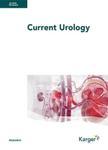Circulating tumor cells and cell-free tumor DNA analyses in urothelial cancer using the LiquidBiopsy platform
作者机构:Department of UrologyUtsunomiya Memorial HospitalTochigiJapan Department of UrologyYuai Memorila HospitalIbarakiJapan Department of UrologyDokkyo Medical UniversityTochigiJapan Diagnostic DivisionAbbott Japan LLCTokyoJapan
出 版 物:《当代泌尿学(英文)》 (Current Urology)
年 卷 期:2022年第16卷第2期
页 面:99-106页
学科分类:0710[理学-生物学] 1002[医学-临床医学] 100210[医学-外科学(含:普外、骨外、泌尿外、胸心外、神外、整形、烧伤、野战外)] 10[医学]
基 金: (20K09546)
主 题:Cell-free DNA Cell-free tumor DNA Circulating tumor cell Next generation sequencing Urothelial cancer
摘 要:Background:Emerging data suggested that liquid biopsy such as detection of circulating tumor cells(CTCs)and cell-free tumor DNA analysis augments the management of patients with urothelial cancer(UC).We presented our pilot experience of liquid biopsy using the Ion Torrent platform to detect CTCs and genomic alterations in UC. Materials and methods:Blood or urine samples from 16 patients were subjected to CTC and plasma/urine cell-free tumor DNA isolation for next generation sequencing(NGS)using the Ion S5 system to detect mutations among 50 oncogenes on the Ion AmpliSeq Cancer Hotspot Panel. Results:The Ion Torrent platform detected a higher number of CTCs than those in previous studies using the CellSearchTM ***,mutations were detected in 13/16(81.3%)patients with a median number of 18(range 12-25).NGS isolated 17 hotspot mutations from 11 genes and 41 novel genomic alterations from 24 genes,some of which are supposed to be clinically actionable. Conclusions:The Ion Torrent platform efficiently detected CTCs compared with previous *** with the present system also allowed for detection of gene alterations which are likely to be therapeutic targets and provided an attractive tool to guide personalized therapy for patients with advanced UC.



